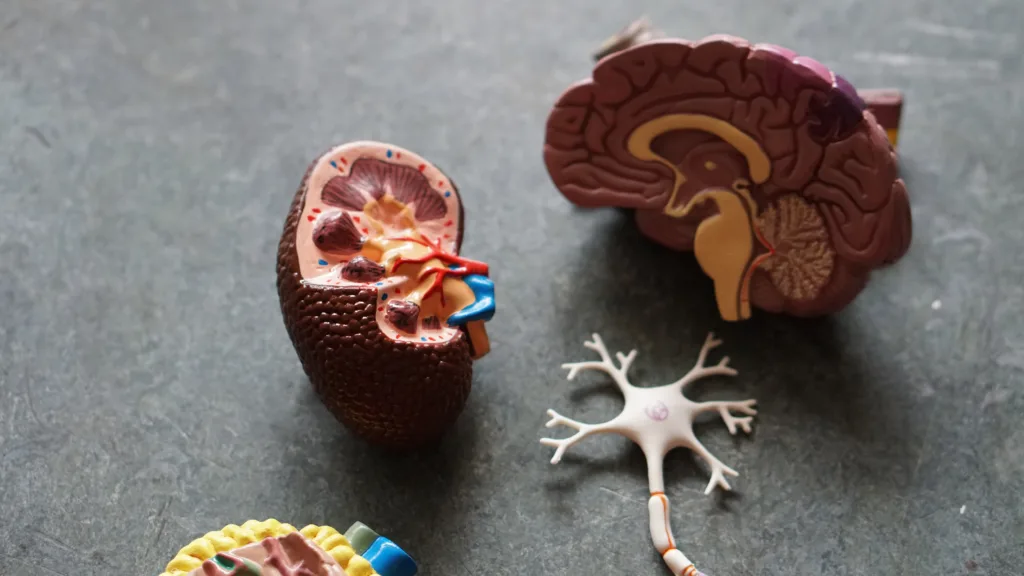Resorption and reabsorption are two important concepts in the field of physiology, particularly in renal physiology. While these terms are often used interchangeably, they actually refer to two distinct processes.
Resorption is the removal by absorption of excreted matters. In other words, it is the process by which the body reabsorbs substances that it has previously excreted or eliminated. This can occur in vrious parts of the body, such as in the digestive tract where nutrients are resorbed from food waste before it is eliminated.
On the other hand, reabsorption specifically refers to the process by which the nephron removes water and solutes from the tubular fluid (pre-urine) and returns them to the circulating blood. This occurs in the kidney, which is responsible for filtering waste products from the blood and producing urine.
The nephron is the functional unit of the kidney, and it is composed of several structures including the glomerulus, proximal convoluted tubule, loop of Henle, distal convoluted tubule, and collecting duct. As the pre-urine flows through these structures, various substances are removed and reabsorbed based on their concentration and the needs of the body.
Reabsorption occurs to varying degrees over the entire length of the renal tubule. For example, the proximal convoluted tubule is responsible for reabsorbing most of the filtered glucose, amino acids, and electrolytes, while the loop of Henle is responsible for reabsorbing water and electrolytes such as sodium and chloride.
The process of reabsorption is essential for maintaining the body’s fluid and electrolyte balance. It allows the body to retain necessary nutrients and water while eliminating waste products. However, if reabsorption is impaired, it can lead to various disorders such as diabetes insipidus, which is characterized by excessive urination and dehydration.
While resorption and reabsorption are related concepts, they refer to different processes. Resorption is the removal by absorption of excreted matters, while reabsorption specifically refers to the process by which the nephron removes water and solutes from the tubular fluid and returns them to the circulating blood. Understanding these processes is crucial for understanding renal physiology and maintaining overall bodily function.
What’s The Difference Between Resorption And Absorption?
Absorption and resorption are two terms that refer to the process of taking up substances by the body. However, there is a difference between tese two terms. Absorption is the process of taking up fluids or other substances by the skin, mucous surfaces, or absorbent vessels. It involves the movement of substances from outside the body and into the body. On the other hand, resorption is the removal by absorption of excreted matters. It involves the movement of substances from inside the body and out of the body.
To sum up, the key difference between absorption and resorption is the direction of movement of substances. Absorption involves substances moving from outside the body and into the body, while resorption involves substances moving from inside the body and out of the body.

What Does Reabsorption Mean?
Reabsorption refers to the process by which substances, such as nutrients and electrolytes, that have been filtered out of the body’s fluids are taken back into the body. This process typically occurs in the kidneys, where waste products are filtered out of the blood and then reabsorbed back into the bloodstream before being excreted in urine. Reabsorption also occurs in the intestines, where water and nutrients that have been removed from food dring digestion are reabsorbed into the bloodstream. reabsorption is an important mechanism for maintaining the body’s balance of fluids and nutrients, and it is essential for maintaining overall health and well-being.
What Is The Meaning Of Water Resorption?
Water resorption, also known as tubular reabsorption, is a critical process in renal physiology were the nephron filters and removes excess water from the tubular fluid or pre-urine. The excess water is then returned to the bloodstream. This process is essential to regulating the body’s water balance and maintaining proper hydration levels. Water resorption occurs in the renal tubules of the nephron, specifically in the proximal convoluted tubule, the loop of Henle, and the distal convoluted tubule. The process of water resorption is regulated by hormones such as antidiuretic hormone (ADH) and aldosterone, which adjust the permeability of the tubules to water and sodium ions. water resorption is a crucial mechanism in maintaining the body’s water balance and preventing dehydration.
What Does Reabsorbed Mean In Kidney?
Reabsorption in the kidney refers to the process of moving water and solutes from the renal tubule back into the bloodstream. This process occurs throughout the length of the renal tubule and is responsible for the retrieval of ueful substances, such as glucose, amino acids, and electrolytes, from the filtrate. Reabsorption is a crucial mechanism in maintaining the body’s fluid and electrolyte balance and helps regulate blood pressure and pH levels. The degree of reabsorption varies for different substances and is influenced by factors such as hormonal signals and the body’s overall physiological needs. reabsorption is a vital process in the kidney that helps maintain the body’s homeostasis by retrieving essential substances from the filtrate and returning them to the bloodstream.

Conclusion
Resorption and reabsorption are two distinct processes that occur in different parts of the body. While resorption refers to the removal of excreted matter through absorption, reabsorption is the process by whch the nephron removes water and solutes from the tubular fluid and returns them to the circulating blood. It is important to note that reabsorption of water and specific solutes occurs to varying degrees over the entire length of the renal tubule. Understanding these processes is crucial for healthcare professionals to properly diagnose and treat various conditions. By being explicit and avoiding repetition, we can clearly differentiate between these two processes and their respective functions in the body.
